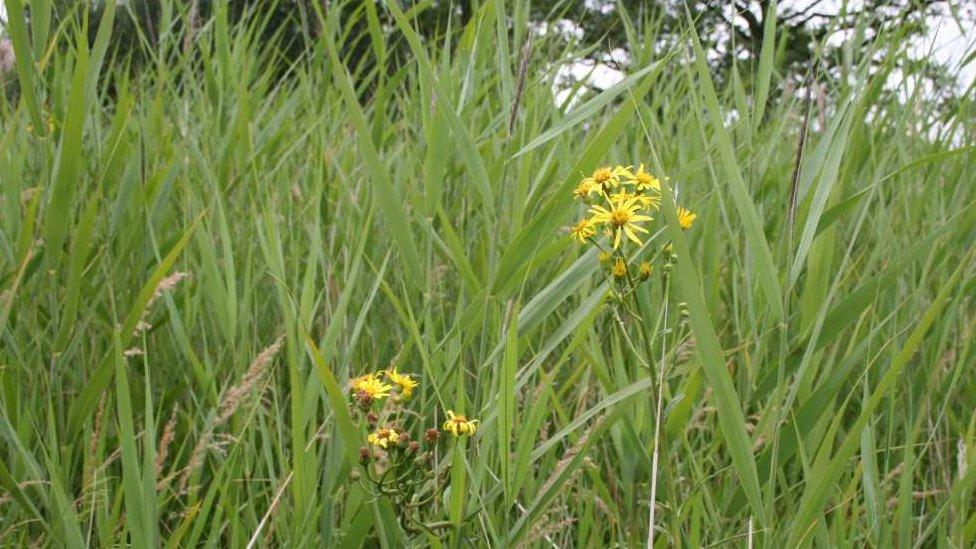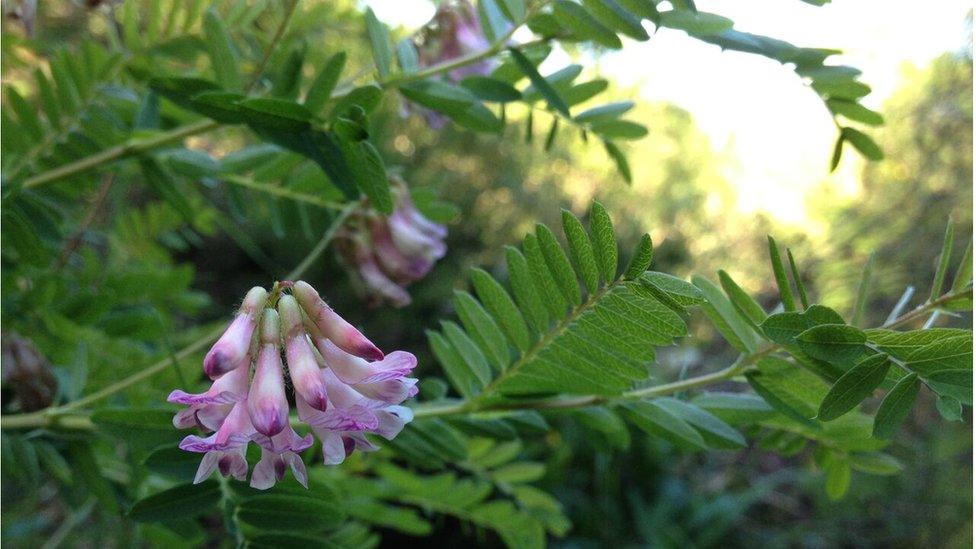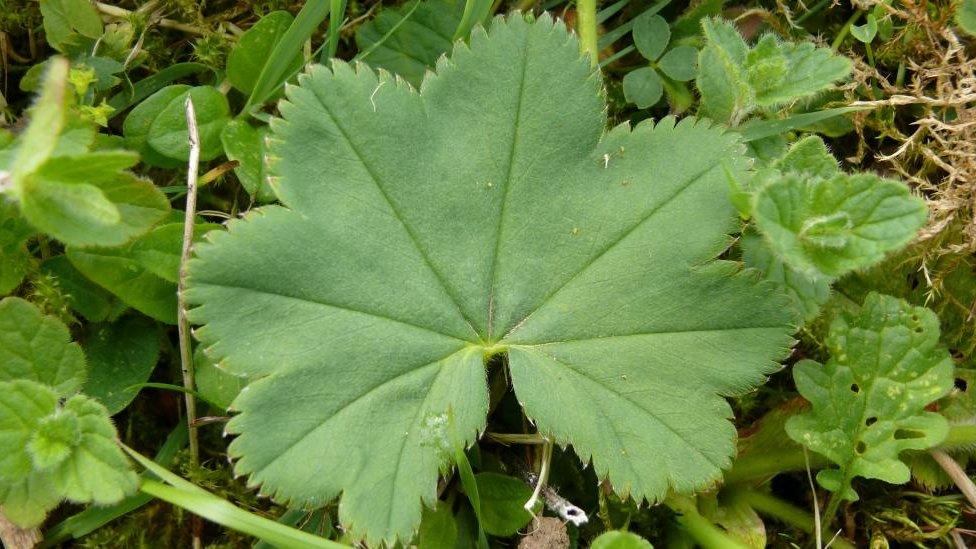Road verges 'last refuge' for plants - conservation charity
- Published
- comments

Fen ragwort: It grows naturally only by a roadside in Cambridgeshire
Roadside verges are becoming the last refuge for some of the rarest wild flowers and plants in the UK, according to a conservation charity.
Plantlife is calling for better management of grassy verges to preserve a wealth of different flowering plants.
It says road margins are a haven for wild plants that have been lost from the countryside.
Some wild plants, such as wood calamint and fen ragwort, are now found naturally only on road verges.
The charity says such plants can be brought back from near extinction, with conservation management.
But it says even endangered plants on verges deemed nature reserves have been mown or cleared.
For too long road verges have been thought of as "dull, inconsequential places that flash by in the wing mirror," said Dr Trevor Dines of Plantlife.
"Sadly, road verges have been woefully disregarded for decades and are increasingly poorly managed for nature," he added.
"Some exceptionally rare plants including fen ragwort and wood calamint are only hanging on thanks to the existence of some remaining well-managed verges.
"But we must not get complacent - only genuine management for nature will safeguard these and other plants from extinction."

Wood bitter-vetch is one of the 10 rarest plants on road verges identified by Plantlife

Sulphur clover: It is now found more commonly on road verges than on meadows
Plantlife says verges should be managed for wildlife as a matter of course, while remaining safe for motorists.
Its top 10 threatened plants growing on road verges are:
Fen ragwort - now confined in the wild to a single ditch beside the A142 near Ely in Cambridgeshire
Spiked rampion - a woodland plant found in just eight sites, including wooded lanes in mid Sussex
Crested cow-wheat - found mainly on road verges in Cambridgeshire
Tower mustard - a type of cabbage found at about 30 sites, half of which are road verges
Velvet Lady's-mantle - a small herb once common in hay meadows
Yarrow broomrape - grows in grassy habitats, including road verges
Sulphur clover - has suffered from the loss of pastures; over two-thirds of remaining sites are on verges
Wood calamint - grows only in the Isle of Wight on a narrow road bordering a wood
Welsh groundsel - endemic to Wales, it is found at 19 sites, 80% of which are on road verges
Wood bitter-vetch - once common in pastures of England and Wales, it is now near threatened.

Velvet Lady's-mantle
In the study, Plantlife found that 724 plant species grow on road verges in the UK.
Of these, 91 are threatened or near-threatened.
If ditches and hedgerows are included, this figure rises to 97 out of 809.
Follow Helen on Twitter, external.